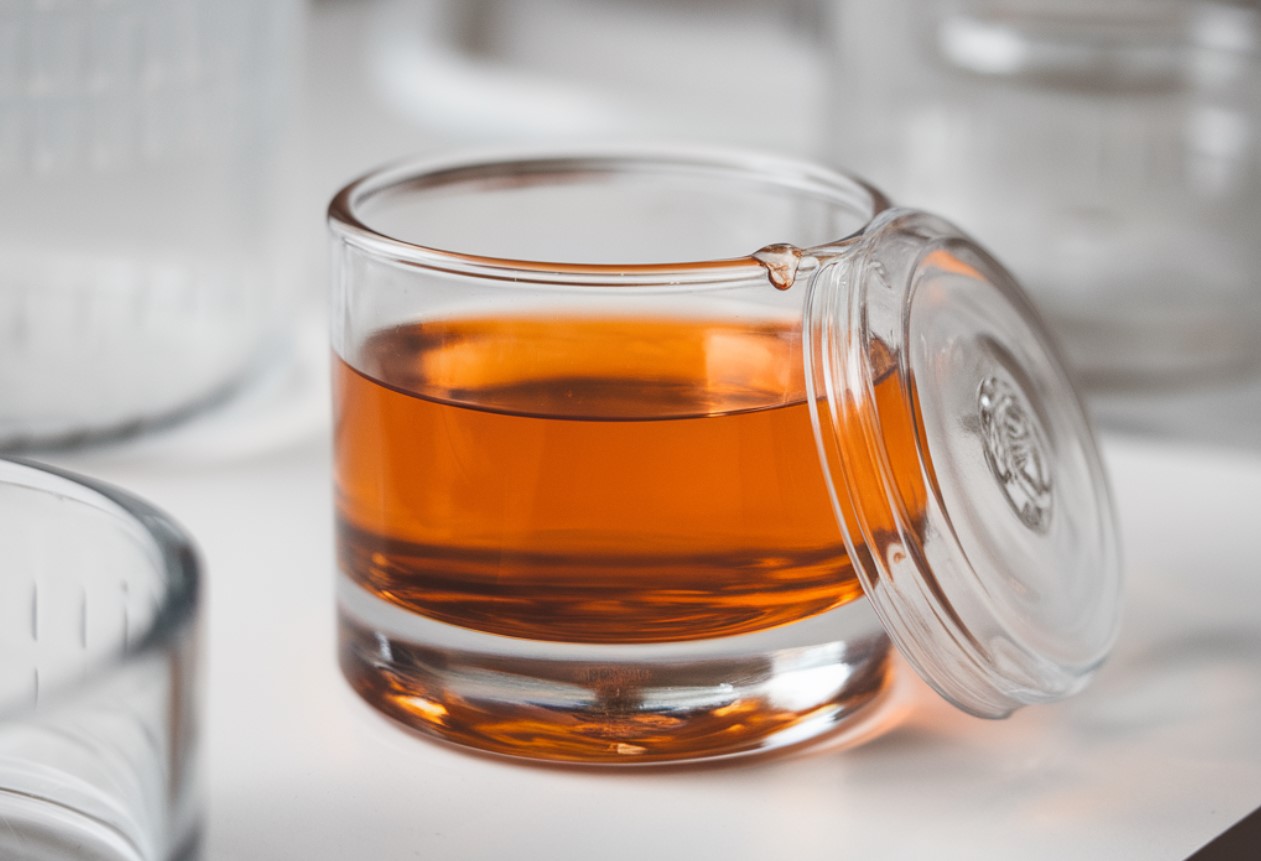
Persulfuric acid, also known as Caro's acid, is a powerful oxidizing agent with the chemical formula H₂SO₅. This compound is not just another acid; it has unique properties and applications that make it stand out. From its role in organic chemistry to its use in wastewater treatment, persulfuric acid is a fascinating substance. But what exactly makes it so special? Why is it called Caro's acid? How is it produced, and what are its safety concerns? In this post, we will dive into 25 intriguing facts about persulfuric acid that will answer these questions and more. Get ready to learn about one of the most interesting acids in the chemical world!
Key Takeaways:
- Persulfuric acid, also known as Caro's acid, is a powerful oxidizing agent used in industries for bleaching, disinfecting, and cleaning. It requires careful handling due to its reactivity and potential environmental impact.
- When working with persulfuric acid, safety measures like protective gear and proper storage are crucial. Its decomposition can release oxygen and harmful byproducts, so proper disposal and adherence to regulations are essential.
What is Persulfuric Acid?
Persulfuric acid, also known as Caro's acid, is a powerful oxidizing agent with a variety of industrial applications. Its chemical formula is H₂SO₅, and it is known for its strong reactivity and ability to decompose into other useful compounds.
- Persulfuric acid is also called Caro's acid, named after the German chemist Heinrich Caro.
- The chemical formula for persulfuric acid is H₂SO₅.
- It is a strong oxidizing agent, making it useful in various chemical reactions.
- Persulfuric acid is often used in the production of disinfectants and bleaching agents.
- It is highly reactive and can decompose into sulfuric acid (H₂SO₄) and oxygen (O₂).
Chemical Properties of Persulfuric Acid
Understanding the chemical properties of persulfuric acid can help in grasping its applications and handling precautions.
- Persulfuric acid is a colorless liquid at room temperature.
- It has a high density, around 2.13 g/cm³.
- The acid is highly soluble in water, forming a clear solution.
- It decomposes rapidly in the presence of heat or light.
- The decomposition of persulfuric acid releases oxygen gas, which can be hazardous.
Industrial Uses of Persulfuric Acid
Persulfuric acid plays a crucial role in various industries due to its strong oxidizing properties.
- It is used in the paper and pulp industry for bleaching wood pulp.
- The textile industry utilizes persulfuric acid for bleaching fabrics.
- It is employed in wastewater treatment to break down organic contaminants.
- Persulfuric acid is used in the electronics industry for cleaning and etching circuit boards.
- It is also used in the synthesis of certain pharmaceuticals and chemicals.
Safety and Handling of Persulfuric Acid
Due to its reactivity, proper safety measures are essential when handling persulfuric acid.
- Persulfuric acid is highly corrosive and can cause severe burns upon contact with skin.
- It should be stored in a cool, dark place to prevent decomposition.
- Protective gear, such as gloves and goggles, is necessary when handling the acid.
- In case of a spill, neutralizing agents like sodium bicarbonate should be used.
- Proper ventilation is crucial to avoid inhaling harmful fumes.
Environmental Impact of Persulfuric Acid
The environmental impact of persulfuric acid is significant, especially considering its decomposition products.
- The decomposition of persulfuric acid releases oxygen, which can contribute to fire hazards.
- It can react with organic materials in the environment, leading to the formation of harmful byproducts.
- Proper disposal methods are necessary to prevent environmental contamination.
- Persulfuric acid should not be released into water bodies due to its potential to harm aquatic life.
- Regulatory guidelines must be followed to ensure safe handling and disposal of persulfuric acid.
The Final Word on Persulfuric Acid
Persulfuric acid, also known as Caro's acid, stands out for its powerful oxidizing properties. It's used in various industries, from wastewater treatment to electronics manufacturing. This compound, with its unique chemical structure, plays a crucial role in producing other chemicals and cleaning up environmental pollutants. Handling it requires caution due to its highly reactive nature. Despite its potential hazards, persulfuric acid's benefits in industrial applications can't be overlooked. Its ability to break down complex molecules makes it indispensable in many processes. Understanding its properties and uses helps us appreciate the science behind everyday products and technologies. Whether you're a chemistry enthusiast or just curious, knowing these facts about persulfuric acid can deepen your appreciation for this remarkable compound.
Frequently Asked Questions
Was this page helpful?
Our commitment to delivering trustworthy and engaging content is at the heart of what we do. Each fact on our site is contributed by real users like you, bringing a wealth of diverse insights and information. To ensure the highest standards of accuracy and reliability, our dedicated editors meticulously review each submission. This process guarantees that the facts we share are not only fascinating but also credible. Trust in our commitment to quality and authenticity as you explore and learn with us.
